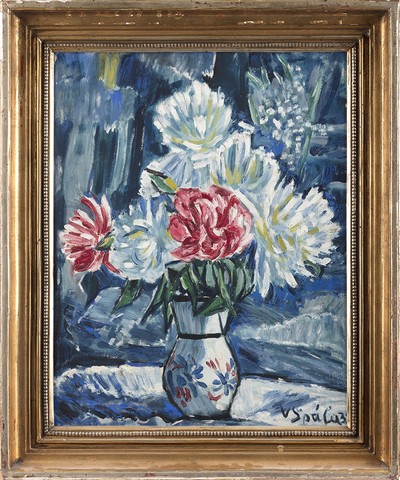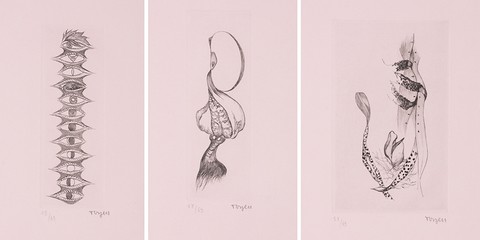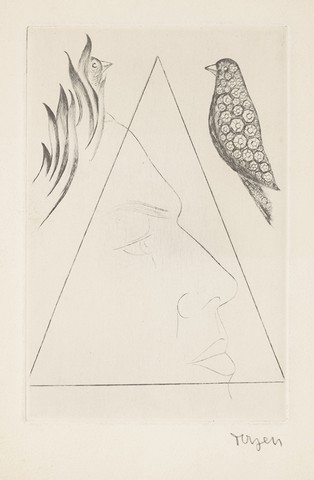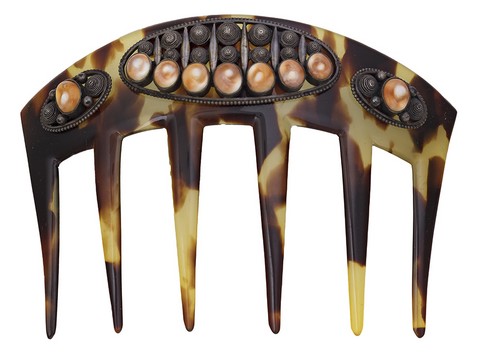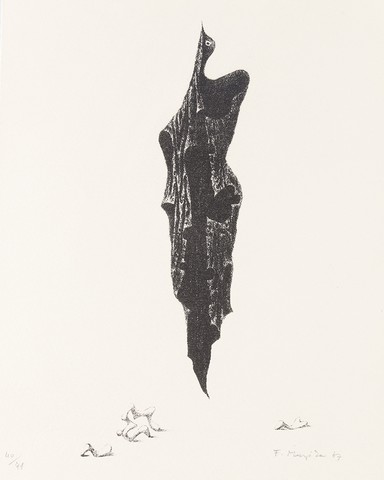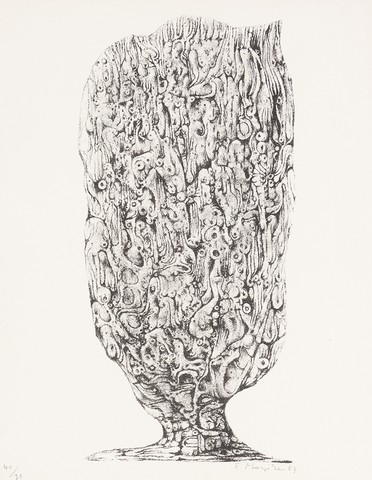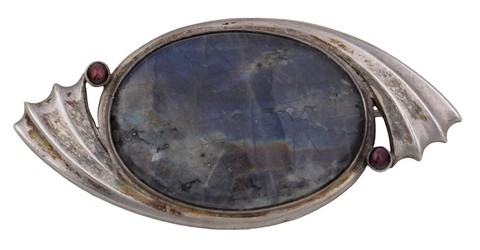‹ BACK
<<
>>
professional expertise PhDr. Rea Michalová, Ph.D. Listed in the inventory of works V. Špála 1932, oil, 641, Pink and White Peonies (small jug), 61 × 49 cm, Rottenberg [then owner] (in: V. Špála, Inventory of works, Prague, 2002, p. 72) Provenance In addition to its artistic qualities, the painting is notable for its provenance. By Václav Špála According to the inventory, it was purchased by a Jewish refugee art dealer Rottenberg from Poland, who also sold works by Jan Zrzavý, Emil Filla and Josef Čapek. In 1932 Rottenberg acquired from Špála a total of nine paintings of bouquets. The later owner of the painting was RNDr. Jaroslav Císař (1894-1983), mathematician, astronomer, journalist and diplomat, who was, among other things, personal secretary to President T. G. Císaros in 1918-1919. Masaryk in Washington and in 1920-1927 as Legation Secretary at the 1920-1927 at the Czechoslovak embassy in London. The Emperor surrounded himself with art and collected art; his wife was the widow of the painter Miloš Jiránek, Antonina (née Zedníková). During his time in Great Britain and Malta his collection was deposited as a free loan in the Moravian Gallery in Brno. In Zdeněk Pousta's book "Jaroslav Císař, Astronomer and Diplomat "From Císař's collection of modern From the opinion of Rea Michalová, PhD. D. The presented work "Pink and White Peonies" is an original, painterly orchestrated and vitalistic work by Václav Špála, a member of the progressive oriented Group of Visual Artists, member of the Tvrdošíjní group, member of the and later chairman of the SVU Mánes, one of the most prominent representatives of the Czech artistic avant-garde, one of our most popular classics. He created an unmistakable painting style, nurtured by Cubist, Fauvist and Expressionist traditions, characterised by a striking handwriting and a vivid, very specific color palette, limited to a few striking tones. Dark blue became such a characteristic feature of his of his painting that it retrospectively acquired the adjective "Spálovská". In 1947, at the artist's Jan Zrzavý did not hesitate to declare: "He was the best of us [Tvrdošíjní - note.]." Václav Špála distinguished himself with his fauvistic foundation already in the early days from his colleagues in the Osma group, whose work was more expressionist. Špála's paintings always reflected in a unique way the immediacy and elemental joy of the painting process, but also the necessary feeling of for order and a sense of pure colour tone. In the search for a striking and immediate effective expression, Špála applied the principles of post-cubist shape deformation and reduced the colour palette to two or three contrasting tones without denying his fundamental relationship to natural reality. In 1923-1926 he went through the so-called green period. In 1927-1930 his blue period, painting in shades of ultramarine and Prussian blue, although this colour remained the heraldic mark of his work until the end of his life. Špál's blue expresses the purity of the sky, the clarity of the waters, the crimson eyes of maidens and laundresses. The fiery double sound is completed by red, the colour of life force. and energy, the colour of the clay from which the bricks are fired - the artist's father was a brickmaker. Václav Špála painted the painting under consideration, "Pink and White Peonies", in happy and successful period, at the age of forty-eight. years old. His work was steady in its fundamental direction and scope. of creative means; it varied mainly in the partial artistic and meaning aspects. As if in its totality it accurately mirrored the balanced course of the author's life in the comfort of his family circle, from 1932 in his own villa in Ořechovka, designed by the architect Pavel Janák. For Václav Špál, flowers symbolized beauty, freshness, brightness and life's well-being. Concentrating on this seemingly simple theme completely naturally from his intense interest in nature. In one of his reflections he he confessed how he was inspired again and again by the summer landscape, the fragrant flowers in a vase or still lifes with fruit, how he experiences colour emotionally and connects it with memory. and musicality. It was a powerful wave of vitalism on which his entire oeuvre which also fully permeates the painting "Pink and White Peonies". The present work "Pink and White Peonies" is a very novel, painterly beautifully arranged bouquet by Špála, which stands out above the others with its by its breathtaking harmony of white and the proverbial "Spálov" blue. Green has been used only subtly, in the leaves and in places in the background, as well as yellow, which here and there enlivens the snow-white inflorescences and which, in the form of two brushstrokes accentuate the upper left part of the canvas. Red complements the delicate floral motif on the smaller porcelain jug, and, above all, the colouring of the two peony blossoms that form the main optical "bond" of the whole composition. The fact that Špála did not use his otherwise favourite Carpathian blanket and suppressed the effect of green (limited to darker greens), he could afford to contain the background in a breathtaking flood of "Spala" blue in an unusually expressive and essentially abstract way. The painting under consideration "Pink and White Peonies" is, in my opinion, one one of Špál's most beautiful bouquets in medium picture format, which that has appeared on the art market in recent times. The fact that this work was in the selected art collection of Dr. Jaroslav Císař only emphasizes its extraordinary artistic qualities. Among the most appreciated canvases were those by Antonín and Linka Procházek, Antonín Slavíček, Václav Špála, Kosárek's landscapes, paintings by Jožka Uprka, but he also had works by Jan Zrzavý and graphic Max Švabinský. Numerous paintings by Miloš Jiránek were of course in Jirkan's works were the most numerous in the collection."
Špála Václav 1885–1946
Pink and White Peonies
Oil on canvas, frame, 61 × 49 cm, signed lower left V Špála 32professional expertise PhDr. Rea Michalová, Ph.D. Listed in the inventory of works V. Špála 1932, oil, 641, Pink and White Peonies (small jug), 61 × 49 cm, Rottenberg [then owner] (in: V. Špála, Inventory of works, Prague, 2002, p. 72) Provenance In addition to its artistic qualities, the painting is notable for its provenance. By Václav Špála According to the inventory, it was purchased by a Jewish refugee art dealer Rottenberg from Poland, who also sold works by Jan Zrzavý, Emil Filla and Josef Čapek. In 1932 Rottenberg acquired from Špála a total of nine paintings of bouquets. The later owner of the painting was RNDr. Jaroslav Císař (1894-1983), mathematician, astronomer, journalist and diplomat, who was, among other things, personal secretary to President T. G. Císaros in 1918-1919. Masaryk in Washington and in 1920-1927 as Legation Secretary at the 1920-1927 at the Czechoslovak embassy in London. The Emperor surrounded himself with art and collected art; his wife was the widow of the painter Miloš Jiránek, Antonina (née Zedníková). During his time in Great Britain and Malta his collection was deposited as a free loan in the Moravian Gallery in Brno. In Zdeněk Pousta's book "Jaroslav Císař, Astronomer and Diplomat "From Císař's collection of modern From the opinion of Rea Michalová, PhD. D. The presented work "Pink and White Peonies" is an original, painterly orchestrated and vitalistic work by Václav Špála, a member of the progressive oriented Group of Visual Artists, member of the Tvrdošíjní group, member of the and later chairman of the SVU Mánes, one of the most prominent representatives of the Czech artistic avant-garde, one of our most popular classics. He created an unmistakable painting style, nurtured by Cubist, Fauvist and Expressionist traditions, characterised by a striking handwriting and a vivid, very specific color palette, limited to a few striking tones. Dark blue became such a characteristic feature of his of his painting that it retrospectively acquired the adjective "Spálovská". In 1947, at the artist's Jan Zrzavý did not hesitate to declare: "He was the best of us [Tvrdošíjní - note.]." Václav Špála distinguished himself with his fauvistic foundation already in the early days from his colleagues in the Osma group, whose work was more expressionist. Špála's paintings always reflected in a unique way the immediacy and elemental joy of the painting process, but also the necessary feeling of for order and a sense of pure colour tone. In the search for a striking and immediate effective expression, Špála applied the principles of post-cubist shape deformation and reduced the colour palette to two or three contrasting tones without denying his fundamental relationship to natural reality. In 1923-1926 he went through the so-called green period. In 1927-1930 his blue period, painting in shades of ultramarine and Prussian blue, although this colour remained the heraldic mark of his work until the end of his life. Špál's blue expresses the purity of the sky, the clarity of the waters, the crimson eyes of maidens and laundresses. The fiery double sound is completed by red, the colour of life force. and energy, the colour of the clay from which the bricks are fired - the artist's father was a brickmaker. Václav Špála painted the painting under consideration, "Pink and White Peonies", in happy and successful period, at the age of forty-eight. years old. His work was steady in its fundamental direction and scope. of creative means; it varied mainly in the partial artistic and meaning aspects. As if in its totality it accurately mirrored the balanced course of the author's life in the comfort of his family circle, from 1932 in his own villa in Ořechovka, designed by the architect Pavel Janák. For Václav Špál, flowers symbolized beauty, freshness, brightness and life's well-being. Concentrating on this seemingly simple theme completely naturally from his intense interest in nature. In one of his reflections he he confessed how he was inspired again and again by the summer landscape, the fragrant flowers in a vase or still lifes with fruit, how he experiences colour emotionally and connects it with memory. and musicality. It was a powerful wave of vitalism on which his entire oeuvre which also fully permeates the painting "Pink and White Peonies". The present work "Pink and White Peonies" is a very novel, painterly beautifully arranged bouquet by Špála, which stands out above the others with its by its breathtaking harmony of white and the proverbial "Spálov" blue. Green has been used only subtly, in the leaves and in places in the background, as well as yellow, which here and there enlivens the snow-white inflorescences and which, in the form of two brushstrokes accentuate the upper left part of the canvas. Red complements the delicate floral motif on the smaller porcelain jug, and, above all, the colouring of the two peony blossoms that form the main optical "bond" of the whole composition. The fact that Špála did not use his otherwise favourite Carpathian blanket and suppressed the effect of green (limited to darker greens), he could afford to contain the background in a breathtaking flood of "Spala" blue in an unusually expressive and essentially abstract way. The painting under consideration "Pink and White Peonies" is, in my opinion, one one of Špál's most beautiful bouquets in medium picture format, which that has appeared on the art market in recent times. The fact that this work was in the selected art collection of Dr. Jaroslav Císař only emphasizes its extraordinary artistic qualities. Among the most appreciated canvases were those by Antonín and Linka Procházek, Antonín Slavíček, Václav Špála, Kosárek's landscapes, paintings by Jožka Uprka, but he also had works by Jan Zrzavý and graphic Max Švabinský. Numerous paintings by Miloš Jiránek were of course in Jirkan's works were the most numerous in the collection."
23
auction 63
starting price 600 000 CZK € 25 391
hammer price 950 000 CZK
starting price 600 000 CZK € 25 391
hammer price 950 000 CZK
Other items
cat. n.24
auction: 63
55 000 CZK / 2 331 €
starting price:
60 000 CZK
hammer price:
cat. n.25
auction: 63
22 000 CZK / 931 €
starting price:
34 000 CZK
hammer price:
cat. n.26
auction: 63
3 000 CZK / 127 €
starting price:
6 500 CZK
hammer price:
cat. n.28
auction: 63
12 000 CZK / 508 €
starting price:
34 000 CZK
hammer price:
cat. n.29
auction: 63
6 000 CZK / 254 €
starting price:
32 000 CZK
hammer price:




